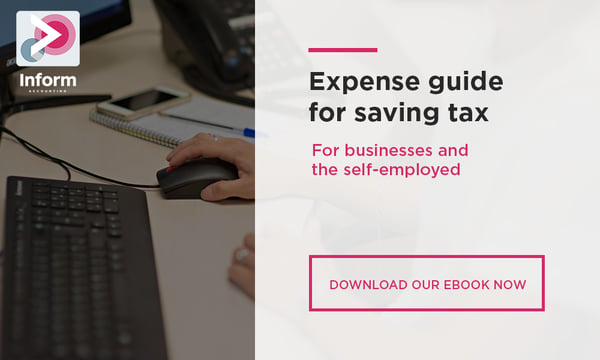BLOG
SWOT: a simple tool to help make your business future proof

It probably goes without saying that you and your business have been impacted by the effects of COVID-19. You’ve been left clutching on to any sort of certainty that is left as daily changes present new challenges for you to overcome. Well, let's put a positive spin on this shall we? Whilst you’re stuck at home in isolation, now is the perfect opportunity for you to start thinking about those longer-term strategies that are going to get you performing back at the top of your game post crisis.
The easiest and most productive way to do this is to give your business a full review. Using the SWOT analysis tool, you can start to identify your current strengths and weaknesses, as well as identify the future threats and potential opportunities.
To get you started, you can download our free SWOT template here.
Our advice is always to look at these strategy plans with the acronym KISS in mind - keep it simple stupid! Don’t overthink it, just write whatever comes to mind, even if that means stating the obvious. The point of a SWOT analysis is to help you to jot down your ideas which you can then develop into a fully comprehensive strategic action plan.
If you’re struggling or not sure where to begin, we’ve included some pointers below.
Strengths
Your strengths, whilst you may not pay them much mind on a day-to-day basis, are all your internal advantages that you as a business have developed over time. This is your chance to really congratulate yourself on a job well done (or you may be giving yourself a slap on the wrist!).
The best way to approach this section is to ask yourself the following questions:
- What is special or unique about your business?
- What does your business do differently, or at least better than your competitors?
Once you’ve identified these key points, start to think about what has happened that has allowed you to achieve this success. Do you have strong client and/or supplier relationships? Do you have some really fantastic people in your team or provide great customer service? Do you have a unique brand or brand story that your customers can connect with? Do you offer a truly different product or service that helps you stand out from competitors?
Weaknesses
Now it’s time to put on your critical hat and think about the downfalls of your business.
For most business owners, this will be the hardest section to think about. Your business is a reflection of your hard work, and it can be uncomfortable to criticise it. But identifying your weaknesses now is part of the strategy to help you convert them into strengths.
Use the current crisis as a way to get you started. A simple example might be your business model / staffing structure. How have you managed to cope with staffing during this period? Should you be adopting a more flexible staffing structure by using freelancers instead of salaried employees?
How many of your customers have defaulted or are delaying on making payments? Do you need to improve your payment collection and credit control processes?
Is there any particular area of your business that you know you could do better in? For many businesses, marketing falls into this category. Whilst you can have a great product, you may be losing out on sales because your marketing and after-sales service is weak.
Try not to think of these issues as failures, but rather use them to guide the future development of your business.
Opportunities
The first thing to address here is; are any of your weaknesses also opportunities? You might be thinking ‘how can a weakness be an opportunity?’ - so let's have a look at an example.
You’re a business that is heavily reliant on retailers to purchase and sell your products. In the current climate, this would be considered a weakness as your sales will have taken a big hit due to the forced closure of many retail outlets. However, this also presents you with the opportunity to consider how else you can sell your product - could you sell it directly to consumers via your own website? Could you make better margins this way?
This is a type of vertical integration and can give you more control over your supply chain, customer interaction and experience of your product and other areas of your business.
Opportunities may not present themselves as glaringly obvious, so try thinking outside the box.
Threats
The most obvious threat to your business at the moment is COVID-19, that’s a given. But are there any other external threats to your business that you haven’t had the time to consider during your busy day-to-day schedule?
Of course one of the issues that has been highlighted by COVID-19 is the effect that self isolation has had on reducing environmental pollution. Does this mean that consumers might become more environmentally conscious, and will that threaten your business?
Again, consumers are being forced to use the internet to shop, so will your consumer shopping habits change when we return to ‘normal’? You may need to start developing a plan now if you think footfall is going to decline.
Whilst the answers to these questions can be worrying, it’s better to get ahead of the curve and make the changes now whilst you have more time. Writing down these potential threats can help focus your mind, and give you strategic direction.
What next?
Now that you have everything summarised in a simple SWOT table, use these points to develop an action plan. It’s all very well writing your thoughts down, but if you don’t follow through on them, it becomes a pointless exercise.
A good way to set up your action plan is to split it in one of the following ways:
- Short-term, medium-term, long-term
- 30 day goals, 60 days goals, 90 day goals
Of course, some of your opportunities may take longer than 90 days to achieve, so the way you set out your action plan is totally dependent on how achievable and long-term your targets are.
Change your habits for the better. Revisit your SWOT analysis periodically, whether this is every quarter, six months or annually is up to you. It’s a good habit to get into though, and you might be surprised at some of the results you get from making this simple change.
GET IN TOUCH...
If you need help with your business planning, give us a call on 0121 667 3882 or email hello@informaccounting.co.uk
Read more of Inform's tax blogs:
Live page: Accounting advice during business disruption
It's that wonderful time of the year...for fraudsters to pray on taxpayers!
Paying yourself a salary: What are the most tax efficient options for limited company owners?
Four key cashflow issues that could cripple your business (and how to avoid them)...




.jpg?width=1500&height=1000&name=amy-hirschi-K0c8ko3e6AA-unsplash-(5).jpg)

